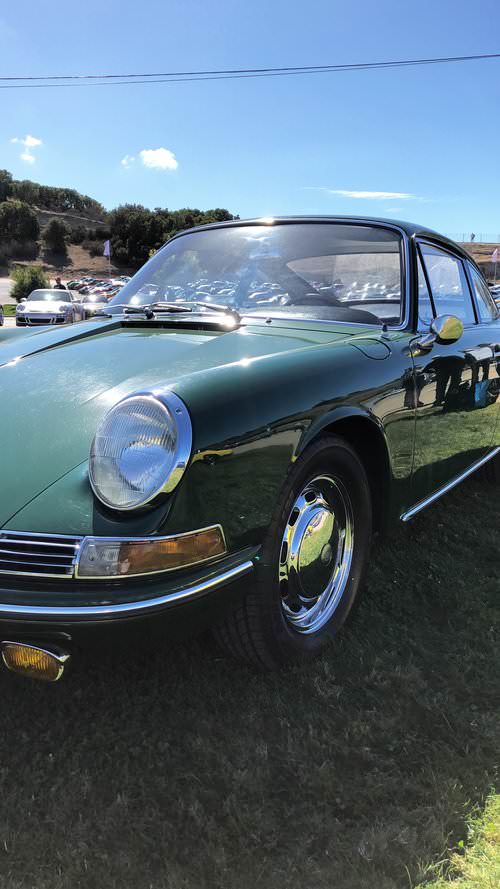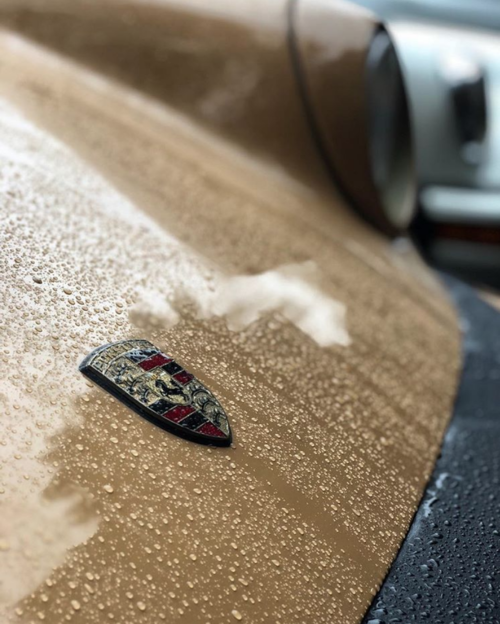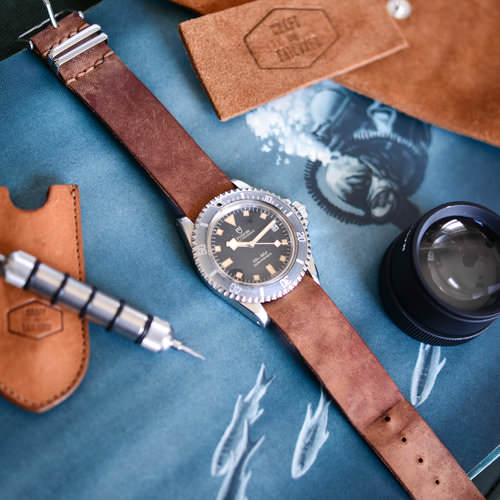However, despite the existence of contemporary equivalents that boast far superior performance metrics and are infinitely more capable of performing their respective tasks, both vintage sports cars and vintage sports watches are currently experiencing record-high prices and an overall increase in interest from the general public.
Other than real estate, there are few things that we as people, can own and derive use from for years at a time, and then sell – decades later – for as much (or possibly significantly more) than what we paid for them. Most things we purchase throughout life age into worthless oblivion, and even those that make it to “antique” status can often not really end up being worth appreciably more because of their old age. However, for many vintage sports cars and vintage sports watches – particularly iconic models from the perennial, premier manufacturers – their present-day resale prices often far exceed the original retail prices that were paid for them when they were brand-new, all those decades ago.

It is not uncommon for certain well-preserved vintage cars from prominent, high-end manufacturers, such as Ferrari, Porsche, and Bugatti to reach six and even seven-figure prices when they sell at auction. While these cars have never (even remotely) been considered inexpensive, their original retail prices were a fraction of what their owners could sell them for today, assuming that they kept up with regular maintenance and did not experience any serious accidents or other misfortunes. Similarly, we are all too familiar with the classic story of the young man who purchased a Rolex Submariner sometime during the late 1950s for less than a couple hundred dollars, wore that watch almost every day for nearly sixty years, and now has a timepiece that is worth about as much as a down-payment on a vacation home.


Despite their high degree of collectability and even higher present-day prices, vintage sports cars and vintage sports watches are inherently less capable and less practical than their present day counterparts. A number of collectable, vintage Porsches sell for quite a bit more than a contemporary 911; however they will likely be slower, harder to drive, and will almost certainly have fewer internal amenities and conveniences than their present-day counterpart. Additionally, reliability will almost always be superior on a new car, and the availability of replacement parts will not become an issue until many years down the line.
A similar truth exists in the world of wristwatches. Many vintage dive watches are now so old (and valuable) that it is not advised to use them in and around water, even when freshly serviced and with a new set of gaskets. While many examples can still be made to be watertight again, water resistance is a temporary state and must be regularly maintained. Consequently, many vintage timepiece owners prefer to avoid the risk entirely, and choose to keep their vintage dive watches dry. Additionally, beyond any issues concerning water resistance, the actual timekeeping ability of a vintage mechanical dive watch, let alone any additional functionality that it may have, will be exponentially inferior to that of a modern, battery-powered dive computer.


However, these mechanically obsolete items are able to retain a cherished and relevant role in our modern lives because the function of a car remains to transport people from one place to another, and the duty of a watch will always be to keep track of time. Despite the myriad of technological advancements to these two industries, their prime functions have remained largely unchanged for over a century. This consistency allows us the luxury of being able to sacrifice a little bit of outright practicality, in favor of a more personalized and aesthetically pleasing approach of accomplishing these basic, mundane tasks. Additionally, it is the change in focus from outright functionality to a greater appreciation of nuanced details and aesthetics that allows vintage cars and vintage watches to transcend their role as strictly functional objects and enter the realm (and price-point) of collectables. With this change in designation comes a greater emphasis placed on what the object actually is, and the way that it goes about performing its intended tasks, rather than just the strict functionality of the object itself.

There is little (if any) sentimentality attached to the purchase of a new iPhone, and as a result of that, there is a price ceiling for what people are willing to pay for one, even though they can do pretty much… well, everything. However, for items where quantities are extremely limited, and there is some degree of sentimental, collectable, or otherwise intangible value inherent to them, prices are not limited by the objects’ actual functional abilities, and can consequently reach figures that are only limited by another individual’s desire to own that particular object.
Today, we are less reliant on cars and wristwatches than ever before. There are a number of ways for people to transport themselves from point-A to point-B, and everything from our cell phones to our microwaves keeps near-perfect time. It is when we are free from being strictly concerned with practicality that we can fully appreciate the nuanced way that vintage cars and watches go about performing the utterly inauspicious functions that we assigned to them. Perfection can often be boring, and it is the subtle quirks and imperfections of vintage cars and watches that breathe personality into them, and allow us to make their mundane – and ultimately inferior, functionality an enjoyable and cherished part of our everyday lives.

Check out 'Reference Tracks' our Spotify playlist. We’ll take you through what’s been spinning on the black circle at the C + T offices.

Never miss a watch. Get push notifications for new items and content as well as exclusive access to app only product launches.
Sign up for our newsletter to receive updates and exclusive offers